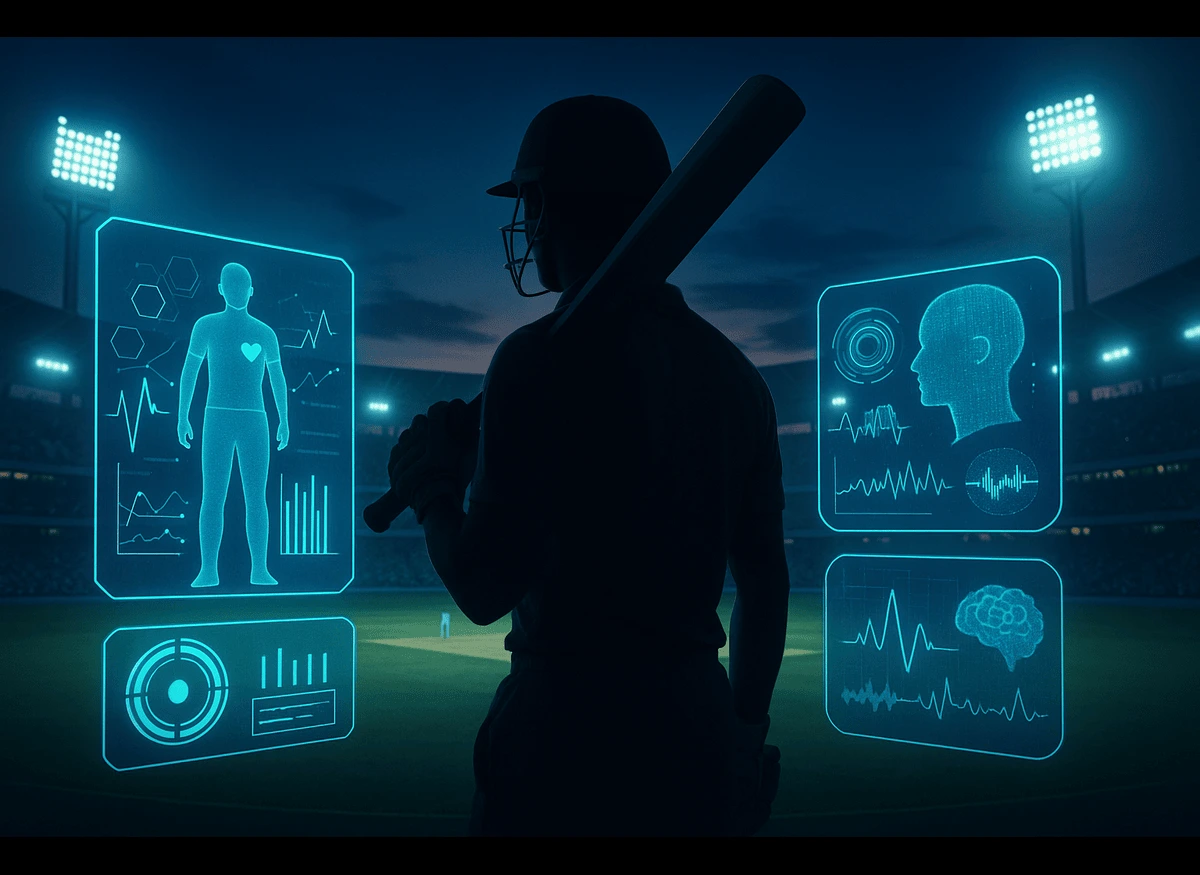
Cricket is undergoing a data-driven transformation as organizations like Cricket Australia adopt cutting-edge AI and wearable technology. With contributions from companies like Catapult Sports, WHOOP, and IBM Watson, teams are now optimizing training, predicting injuries, and enhancing athlete recovery using real-time biometric data. This fusion of tech and sport is shaping the future of cricket performance, one algorithm at a time.
Advancements in artificial intelligence (AI) and wearable technology are reshaping professional sports—and cricket is at the forefront of this revolution. Cricket Australia, along with innovative tech companies, is using these breakthroughs to monitor player fitness, optimize training, and reduce injury risks, paving the way for a new era of data-driven athletic performance.
Revolutionizing Training with Real-Time Data
Modern wearable tech—ranging from smart sensors in apparel to advanced tracking devices—has become an essential part of player training and performance monitoring. Devices capture crucial metrics like heart rate, speed, acceleration, and recovery times. Cricket Australia has recently integrated these systems into their training programs to ensure athletes receive real-time feedback, allowing coaches to fine-tune workloads and identify fatigue before it leads to injury. According to ESPN Cricinfo, teams using these technologies have experienced notable improvements in recovery times and overall fitness levels.
The Role of AI in Predictive Analytics
While wearable devices gather vast amounts of data, AI plays a pivotal role in analyzing it. Advanced machine learning algorithms sift through historical and real-time data to identify patterns that may predict injuries or performance dips. For example, AI models can detect subtle changes in an athlete’s biometric data, prompting early interventions that prevent long-term injuries. Cricket Australia recently showcased a case study where AI-driven insights contributed to a significant drop in training-related injuries, underlining the power of predictive analytics in maintaining peak performance.
Notable Companies Driving Innovation
Several leading companies are at the forefront of this technological transformation:
Catapult Sports:
Known for its cutting-edge wearable devices – Catapult and analytics platforms, Catapult Sports is a trusted partner for many professional sports teams. Their technology provides real-time insights that help coaches and medical teams monitor player load, prevent injuries, and enhance performance. Catapult’s systems are widely used in cricket, helping teams track player movement and optimize training sessions.
WHOOP:
WHOOP offers a wearable strap that continuously monitors physiological data such as heart rate variability and sleep quality. Its data-driven insights enable athletes to adjust recovery protocols and training intensity. Top-tier teams are beginning to incorporate WHOOP’s technology to fine-tune recovery strategies and boost overall fitness.
Polar and Fitbit:
These established brands have expanded their reach into professional sports by offering wearable devices that capture vital statistics. Their innovations in sensor technology and real-time tracking provide comprehensive data that feeds into AI-driven platforms, enabling personalized training plans and injury prevention strategies.
IBM Watson:
While not a wearable tech company per se, IBM Watson’s AI capabilities are increasingly being integrated into sports analytics. Their advanced algorithms process data from wearable devices, offering deeper insights into player performance and injury risk, which can be crucial for on-field decision-making.
Enhancing Recovery and Tailored Nutrition
Beyond training, AI-powered systems have transformed recovery protocols. After a game, data collected from wearables is analyzed to craft personalized recovery plans. These plans may include tailored nutritional guidance, rest schedules, and specific exercises targeting stressed muscle groups. This level of customization ensures that athletes recover more effectively and are ready to perform at their best in subsequent matches.
Tactical Advantages and In-Game Adjustments
The benefits of integrating AI and wearable tech extend to live match scenarios as well. During games, real-time data feeds allow coaches to monitor player conditions on the field, making strategic decisions about substitutions or tactical adjustments based on current fatigue levels. This instantaneous feedback loop not only improves on-field performance but also offers a competitive edge by helping teams adapt to dynamic match situations.
Broader Implications for Cricket and Sports
The integration of AI and wearable technology in cricket is part of a broader trend toward data-driven decision-making in sports. With organizations like Cricket Australia leading the way and companies such as Catapult Sports, WHOOP, Polar, and IBM Watson setting the technological standard, the future of cricket is evolving. Enhanced player monitoring, personalized training regimens, and smarter recovery protocols are just the beginning. As these technologies mature, they promise to revolutionize not only cricket but the entire sporting landscape by fostering higher performance levels and reducing injury risks.
By embracing these innovations, cricket is stepping into a new era where tradition meets modern science. The fusion of AI and wearable tech is not only optimizing player fitness but is also redefining what it means to prepare for competition in the 21st century.
Also Read : Infosys Transforms Roland-Garros 2025






